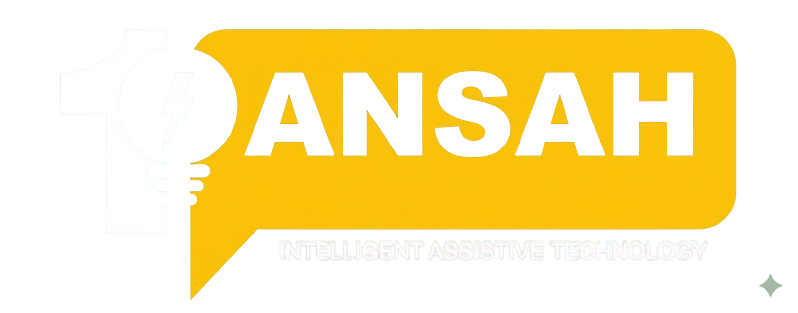Delving into “The Art of Debugging: Techniques and Strategies in Coding” uncovers a multifaceted realm crucial for programmers. This comprehensive exploration not only elucidates fundamental debugging principles but also delves into advanced strategies like breakpoint debugging and error tracking. By dissecting real-world examples and offering practical tips, this study equips programmers with the prowess to tackle bugs effectively, enhancing code quality and fostering innovation. Embracing the intricacies of debugging empowers developers to navigate complexities, optimize performance, and deliver resilient software solutions in the dynamic landscape of programming.
Effective Use of Print Statements for Debugging:
Print statements are one of the simplest yet powerful tools for debugging code. By strategically placing print statements throughout the code, developers can gain insight into the program’s execution flow and variable values at different stages. This technique is particularly useful for identifying logic errors and tracking the state of variables. However, it’s crucial to use print statements judiciously to avoid cluttering the codebase with excessive output.
Mastering the Debugger: Tips for Efficient Code Inspection:
Debuggers are sophisticated tools that allow developers to inspect code execution in detail. By setting breakpoints, stepping through code, and examining variable values, developers can pinpoint the root cause of bugs more efficiently. Moreover, modern debuggers offer features like watchlists and expression evaluation, further enhancing the debugging experience. Mastering debugger usage can significantly streamline the debugging process and improve code comprehension.
Debugging Like a Detective: Uncovering Hidden Bugs
Debugging often involves detective work, where developers must carefully analyze symptoms to uncover hidden bugs. This requires a systematic approach, starting with reproducing the bug and gathering relevant information, such as error messages and stack traces. By examining code logic and data flow, developers can gradually narrow down the root cause of the issue. Additionally, collaboration with colleagues and leveraging online resources can provide valuable insights during the debugging process.
Understanding Stack Traces: Navigating Error Messages
Stack traces are invaluable sources of information when debugging code. They provide a detailed history of function calls leading up to the point of error, helping developers trace the execution flow and identify problematic code segments. By analyzing stack traces, developers can quickly locate the source of exceptions and errors, facilitating faster resolution. Understanding how to interpret and navigate stack traces is essential for effective debugging in any programming language.
The Power of Rubber Duck Debugging: Talking Through Code
Rubber duck debugging is a technique where developers explain their code line by line to an inanimate object, such as a rubber duck. This process helps developers articulate their thoughts and identify logic errors or misconceptions. By verbalizing the code’s functionality, developers often gain fresh insights and discover bugs that were previously overlooked. Rubber duck debugging can be a surprisingly effective technique for solving complex problems and fostering a deeper understanding of the codebase.
Identifying Common Coding Pitfalls and How to Fix Them:
In the process of debugging, developers often encounter common coding pitfalls that lead to errors. These include off-by-one errors, null pointer dereferences, and infinite loops, among others. Recognizing these patterns and understanding their underlying causes is crucial for efficient debugging. By adopting defensive programming practices and employing robust error-handling mechanisms, developers can mitigate the risk of common pitfalls and write more resilient code.
Utilizing Breakpoints for Precise Code Analysis:
Breakpoints allow developers to pause the execution of code at specific points and inspect its state. This enables precise analysis of program behaviour and facilitates the identification of bugs. By strategically placing breakpoints in critical sections of code, developers can isolate problematic areas and diagnose issues effectively. Furthermore, conditional breakpoints and trace points offer additional flexibility for debugging complex scenarios. Utilizing breakpoints judiciously can significantly accelerate the debugging process and improve code quality.
Debugging Techniques for Asynchronous Programming:
Asynchronous programming introduces unique challenges for debugging due to its non-linear execution model. Issues such as race conditions, deadlocks are common in asynchronous codebases. To debug asynchronous programs effectively, developers must leverage tools like async/await, promises, and event loops. Additionally, techniques such as logging, error handling, and unit testing can help identify and resolve bugs in asynchronous code. Understanding the intricacies of asynchronous programming is essential for proficient debugging in modern software development.
Strategies for Debugging Complex Algorithms:
Debugging complex algorithms requires a systematic approach and a deep understanding of the underlying logic. Developers must break down the algorithm into smaller components and test each component independently. By visualizing data structures and stepping through the algorithm’s execution, developers can identify logical errors and edge cases. Furthermore, unit testing and code reviews play a crucial role in validating algorithm correctness and detecting potential bugs. Effective debugging strategies for complex algorithms involve a combination of analytical thinking, testing methodologies, and collaboration with peers.
Effective Logging Practices for Debugging:
Logging is a fundamental debugging technique that involves recording information about program execution to aid in troubleshooting. By logging relevant events, variables, and error messages, developers can gain insights into the program’s behavior and diagnose issues efficiently. However, it’s essential to follow best practices for logging, such as using meaningful log messages, managing log levels, and avoiding excessive verbosity. Additionally, leveraging logging frameworks and tools can streamline the logging process and enhance debuggability.
Harnessing the Power of Unit Tests in Debugging:
Unit tests are invaluable tools for debugging code and ensuring its correctness. By writing automated tests for individual units of code, developers can detect regressions and verify expected behavior. Unit tests provide a safety net during refactoring and code changes, allowing developers to catch bugs early in the development cycle. Moreover, test-driven development (TDD) promotes a proactive approach to debugging by encouraging developers to write tests before implementing functionality.
Debugging Memory Leaks and Resource Management Issues:
Memory leaks and resource management issues are common sources of bugs in software applications, particularly in languages like C and C++. These issues occur when memory or other system resources are allocated but not properly deallocated, leading to memory leaks or resource exhaustion. Debugging memory leaks requires tools like profilers and memory analyzers to identify allocation patterns and track resource usage. Additionally, adopting best practices for memory management, such as using smart pointers and RAII (Resource Acquisition Is Initialization), can help prevent memory leaks and improve code reliability.
The Art of Binary Search: Debugging Efficiently in Large Codebases
Navigating large codebases can be challenging, especially when debugging complex systems with multiple dependencies. Binary search is a technique that involves systematically narrowing down the search space to isolate the root cause of bugs. By bisecting the codebase and testing smaller subsets, developers can quickly identify the faulty component or commit. Version control systems like Git offer powerful tools for performing binary search operations, such as git bisect. By mastering the art of binary search, developers can efficiently debug issues in large codebases and minimize downtime.
Using Version Control Systems for Debugging Assistance:
Version control systems (VCS) play a crucial role in debugging by providing a history of code changes and facilitating collaboration among developers. By leveraging features like branching, tagging, and diffing, developers can track changes and identify when and where bugs were introduced. Moreover, VCS platforms often integrate with issue tracking systems and code review tools, enabling seamless collaboration and traceability.
Debugging Web Applications: Handling Frontend and Backend Issues
Web applications present unique challenges for debugging, given their distributed nature and diverse technology stack. Frontend issues may arise from JavaScript errors, CSS layout issues, or browser compatibility issues, while backend issues can stem from server-side logic, database interactions, or network requests. Debugging web applications requires a combination of tools and techniques tailored to both frontend and backend development. Browser developer tools, server logs, and network monitors are essential for diagnosing web application issues comprehensively. Additionally, adopting frameworks and libraries that facilitate debugging, such as React Developer Tools and Django Debug Toolbar, can streamline the debugging process and improve developer productivity.
Debugging Performance Bottlenecks in Code:
Performance bottlenecks can significantly impact the scalability and responsiveness of software applications. Identifying and resolving performance issues requires profiling tools to analyze code execution and resource utilization. By measuring CPU usage, memory consumption, and I/O operations, developers can pinpoint bottlenecks and optimize critical sections of code. Techniques such as code refactoring, algorithm optimization, and caching can help alleviate performance bottlenecks and improve application performance. Moreover, continuous monitoring and benchmarking are essential for detecting performance regressions and ensuring optimal application performance over time.
Understanding and Fixing Runtime Errors:
Runtime errors occur during program execution and can result from various factors, such as invalid input, resource exhaustion, or unexpected conditions. Common types of runtime errors include null pointer exceptions, array index out of bounds errors, and division by zero errors. Debugging runtime errors requires careful analysis of program state and execution flow using tools like debuggers and logging. By reproducing the error and examining relevant variables and stack traces, developers can diagnose the root cause of runtime errors and implement appropriate fixes.
Debugging Security Vulnerabilities: Protecting Against Exploits
Security vulnerabilities pose significant threats to software applications, potentially leading to data breaches, system compromises, and financial losses. Common security vulnerabilities include injection attacks, cross-site scripting (XSS), and authentication bypass vulnerabilities. Debugging security vulnerabilities requires a comprehensive understanding of security principles and threat models. By conducting security audits, penetration testing, and code reviews, developers can identify and remediate vulnerabilities before they are exploited.
Collaborative Debugging: Techniques for Team-Based Problem Solving
Collaborative debugging involves leveraging the collective expertise of team members to solve complex problems more efficiently. By sharing knowledge, brainstorming ideas, and conducting code reviews, developers can uncover hidden bugs and explore alternative solutions. Collaboration tools such as shared whiteboards, screen sharing, and instant messaging facilitate real-time communication and collaboration among team members.
Continuous Integration and Continuous Debugging:
Continuous integration (CI) and continuous debugging (CD) are practices that involve automating the process of building, testing, and debugging code changes. By integrating code changes into a shared repository frequently and running automated tests, developers can detect bugs early in the development cycle. Continuous debugging extends the concept of CI by incorporating automated debugging techniques, such as static analysis, dynamic analysis, and fuzz testing. By automating the debugging process, developers can identify and fix bugs more efficiently, leading to faster release cycles and improved code quality.
In conclusion, mastering the art of debugging requires a combination of techniques, tools, and strategies tailored to the specific challenges of software development. By adopting best practices for debugging, developers can diagnose and fix bugs more efficiently, leading to higher code quality, improved productivity, and better overall software reliability. Whether it’s using print statements for quick troubleshooting or employing sophisticated debugging tools for in-depth analysis, effective debugging skills are essential for success in the ever-evolving field of software engineering.

